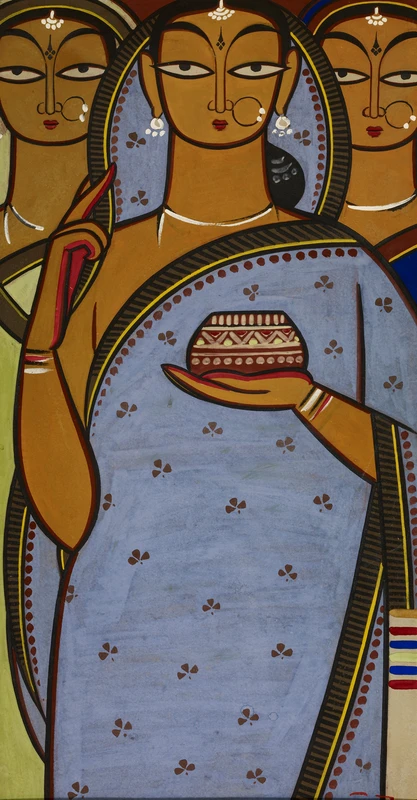Painting Freedom: Indian Modernism and its Three Rebels
11 Apr-22 Jun 2024


A major exhibition of over 150 artworks from the Bengali School of Art focusing on the work of Hemen Mazumdar, Jamini Roy, and Rabindranath Tagore, along with a number of their contemporaries.
The Government College of Art in Calcutta was “established by a benevolent government for the purpose of revealing to the Indians the superiority of European art” in the second half of the 19th century. At the dawn of the 20th century, Indian artists at the college started questioning “what is modern Indian art?” Academic art, introduced by the British Raj, was challenged by the nationalist art movement, the Bengal School of painting, led by Abanindranath Tagore (1871-1951) and his disciples who dominated the art scene in the first decades of the twentieth century.
Around 1915, academic artists had been in retreat all over India because of the Bengal School. In the 1920s, Indian art gained further complexity in a triangular standoff between the orientalists of the Bengal School (Abanindranath Tagore, Gaganendrnath Tagore, Sunayani Devi, Nandalal Bose), the academic artists (Hemendranath Mazumdar, Atul Bose) and the avant-garde artists (Rabindranath Tagore, Jamini Roy). Despite the institutional power of the orientalists, arguably, the most successful modern Indian artists to emerge from Bengal pre-independence were those who broke away from the traditional Bengal School: Hemendranath Mazumdar (1894-1948), Jamini Roy (1887-1972), and Rabindranath Tagore (1861-1941).
To provide a relative broad coverage of the Bengal School, this exhibition will consist of the traditional Kalighat paintings and the Early Bengal oils from the beginning of the 20th century that served as inspiration, the major Bengal school artists, the academic artists, and the avant-garde artists.
The emergence of Indian modern art as a quest for cultural independence. To expose and educate the audience on the vital role that Bengal played in the emergence of Indian modern art and how a nationalist agenda in art attempted to dominate the discourse. Yet, the three most successful of the artists of that time (Hemen Mazumdar, Jamini Roy, and Rabindranath Tagore), and whose appeal endures even today, each rejected in his own way an explicit call to rediscover the Indian art of centuries, and instead fashioned their own path that chose a universal language of art, borrowing from western academic art, Indian folk traditions, and the then contemporary expressionism. The exhibition hopes to demonstrate the observation of Howard Hodgkin: “There is a special relationship between the identities of ‘modern’ and ‘Indian’ which is uniquely tied to the historical moment.”